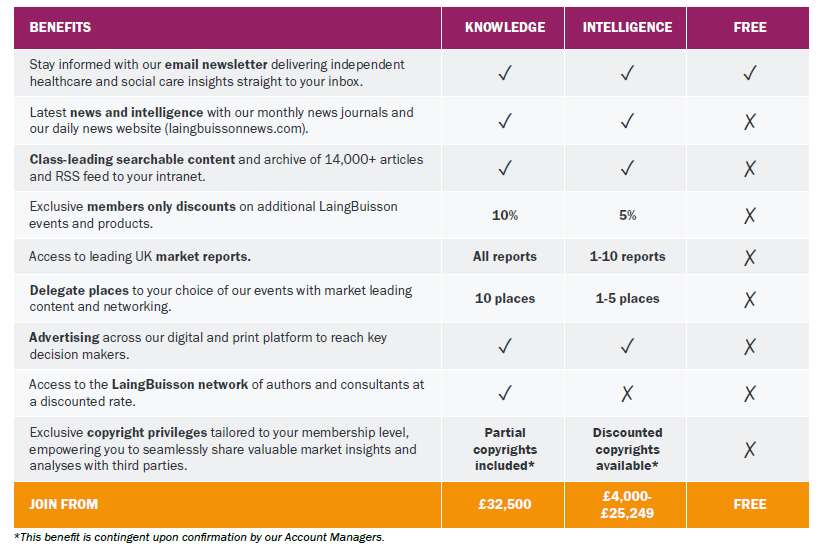Could the Coronavirus force change in the Homecare and Supported Living Market?
Sponsor: Addleshaw Goddard
LaingBuisson has today published the third edition of its Homecare and Supported Living UK Market Report
Covering the market as it was in 2019, the report was completed in late March 2020, just as the UK was going into lockdown because of Coronavirus. The report, therefore, provides a vital snapshot of the market and its development in the run up to this world-changing event which will impact on the homecare and supported living market in many ways.
A key consideration is staffing. Staff retention and turnover remain a challenge in this sector where many staff are paid close the National Living Wage. Vacancy rates in homecare are twice as high as in care homes and vacancy rates are particularly high in affluent areas. Nevertheless, homecare workers are being asked to put themselves in harm’s way by continuing to support those they care for through the Coronavirus outbreak. Will this lead the government and society to place more value on the homecare sector as a result?
At the same time, the report asks whether we are reaching ‘peak care’. It discusses the options for caring for an expanding elderly population in the face of there apparently not being enough employable carers. These include more overseas recruitment, recruiting people beyond retirement age, or making recourse to artificial intelligence and lifelike robots. It speculates that some issues may be resolved by the economic impact of Coronavirus on the wider jobs market, making the sector look more attractive to job seekers.
The UK homecare and supported living market as a whole was worth £9.5 billion in 2018/19 and provided services to just under 1 million people across the UK. Fast growth has been seen in the clinical homecare market. Supported living, which is mainly provided to younger people, is estimated to be growing at a CAGR of 2.7% between 2015 and 2030. Profitability for providers is improving as they exit from financially unsustainable projects. Private pay remains the most profitable, but still only accounts for 26% of the homecare market.
New in this year’s report is information on the number of people being looked after by each registered homecare service, as recorded by the CQC on the day of inspection. This confirms the continued fragmentation of the market, showing that around 46% of homecare services look after fewer than 30 service users.
Report author, William Laing, said:
“We have identified future potential for homecare and supported living providers in growing the use of digital technology, the integration of health and social care, and in place-based integrated care systems. While we would have expected growth in all of these areas in normal circumstances, we expect that the adoption of new ways of working will be accelerated by the Coronavirus crisis as providers adapt to offer a high level of service in a changing operating environment.
“How the Coronavirus crisis will affect the homecare and supported living market is not directly dealt with by this report, which takes a backward look at the year just past. It will emerge in the coming weeks and months. What we do know, is that the crisis is likely to change the public perception of the importance of the care workforce and the role they play, not least because people who have not worked in the sector previously may find themselves doing so, whether as a paid worker or a volunteer.”







